Succeeded in the first ever ``imaging of a black hole'', existing in the galaxy M87, 55 million light years from the earth with a mass 6.5 billion times that of the sun

Event Horizon Telescope Japan | EHT-Japan
https://www.miz.nao.ac.jp/eht-j/
At 22:00 on April 10 (Wednesday), the Event Horizon Telescope (EHT) Project and #NAOJ and others will hold a press conference on the research results of EHT. NAOJ will live stream this press conference. https://t.co/FVtpocjZ2Z
— National Astronomical Observatory of Japan (@prcnaoj) April 8, 2019
YouTube: https://t.co/XQGSw7fJvp
Nico Live: https://t.co/bHUlq9O2fB
What EHT will release this time is the observation results of the region emitting enormous energy at the center of the Milky Way galaxy where the earth is located. Based on the behavior of nearby celestial bodies, it is speculated that a supermassive black hole exists in this region named ' Sagittarius A* (A Star)'. It has attracted the attention of astronomers.
Because the gravity of a black hole is so strong that it distorts space, it is said that it is impossible to directly observe it because electromagnetic waves including light cannot escape. Therefore, EHT collaborated with a project called ` ` Global mm-VLBI Array (GMVA) '' that links multiple radio telescopes to build a network that connects a total of eight radio telescopes in the United States, Chile, Antarctica, etc. The 'global scale' virtual giant telescope boasts 2000 times the resolution of the Hubble Space Telescope and is said to be able to count the number of stitches on a baseball ball 8000 miles (about 13,000 km) away. .
The image below is an infographic showing the positional relationship of participating radio telescopes.
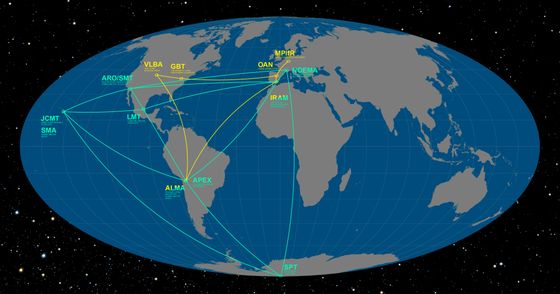
by
EMT, which created a super-giant telescope, first interstellar gas swallowed by the `` Event Horizon '' of a supermassive black hole in `` Sagittarius A * '' about 26,000 light years away from the earth. Observed. Then, by capturing the ' black hole shadow ', which is the shadow of the black hole, from the electromagnetic waves emitted by the plasma that moves at a speed close to the speed of light and has a temperature that reaches several billion degrees, the figure of the black hole is embossed from the outline. I'm trying
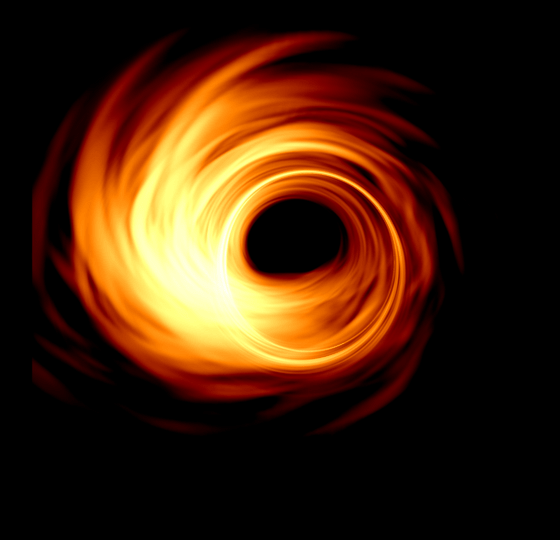
by
When EHT was launched, it was not possible to integrate and process a huge amount of observation data, averaging more than 1 petabyte (1000 TB) per night. is said to have stood. The press conference to announce the results will be broadcast live from 22:00 on April 10, 2019 from 6 countries around the world, including the United States and Belgium. You can see.
Postscript 2019/04/11 09:10
This is the appearance of the black hole that was actually announced. It looks like a vague image, but it is an epoch-making image in that it was possible to image a black hole, which had been a theoretical existence until now, as an actual observation result instead of CG synthesis or simulation. . The object that was photographed was not Sagittarius A*, which is said to be the largest because it is relatively close to the Earth, but M87 in the Virgo cluster of galaxies.
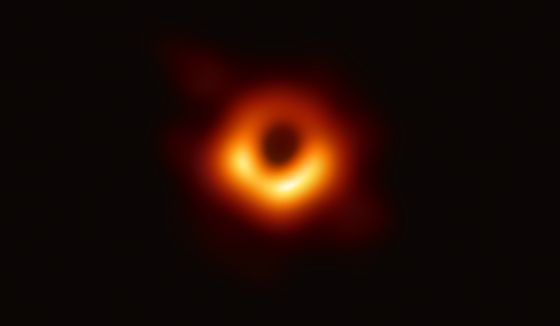
by
The image above shows the electromagnetic waves emitted by the ultra-high temperature plasma gas sucked into the black hole. Electromagnetic waves approaching the black hole are absorbed by the black hole, but as a result of the space being distorted by the gravity of the black hole, the electromagnetic waves that were not supposed to fly in the direction of the earth originally seem to wrap around the black hole. It looks like a ring because it is bordered by The black shadow in the center of the ring is the black hole shadow, and the `` event horizon '', which can be said to be the surface of the black hole, is considered to be about 40% the size of the black hole shadow.
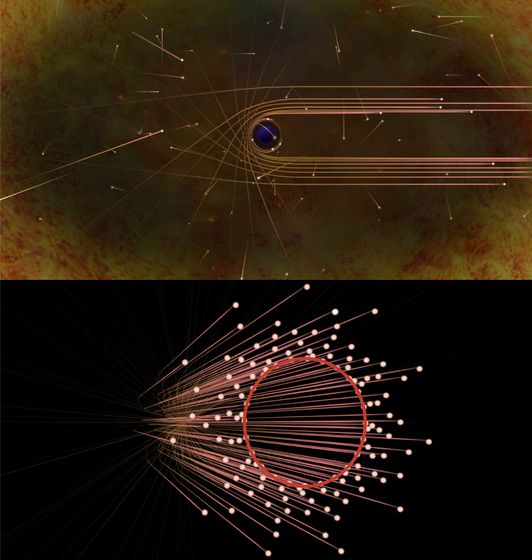
by Nicolle R. Fuller/NSF
This is the result of observing the same M87 in visible light.
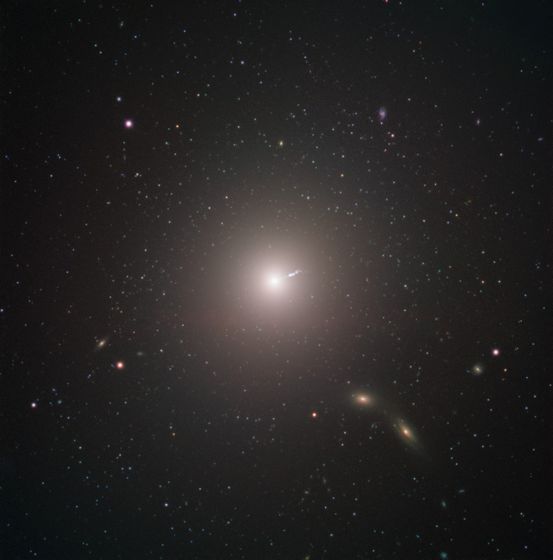
by
Because the black hole emits very strong energy and the magnification is lower than the image released this time, it looks like a bright white point in the image taken with visible light.
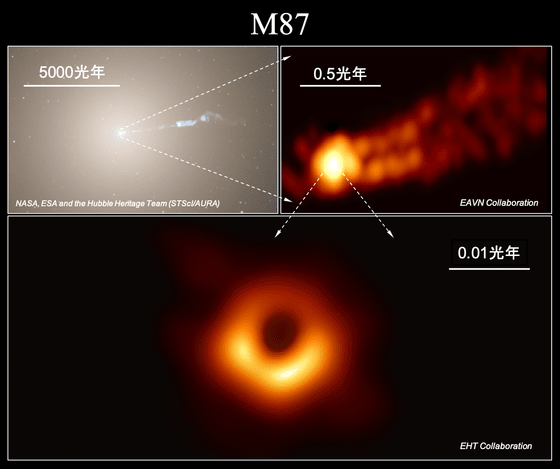
The image published this time was observed using eight radio telescopes, but it is a policy to add more radio telescopes in the future and shoot clearer images and movies.
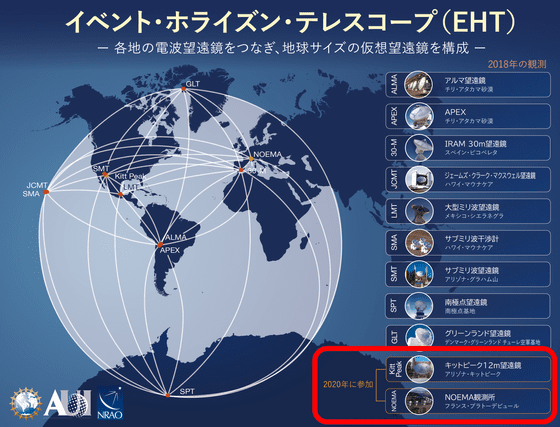
Related Posts:
in Science, Posted by log1l_ks







